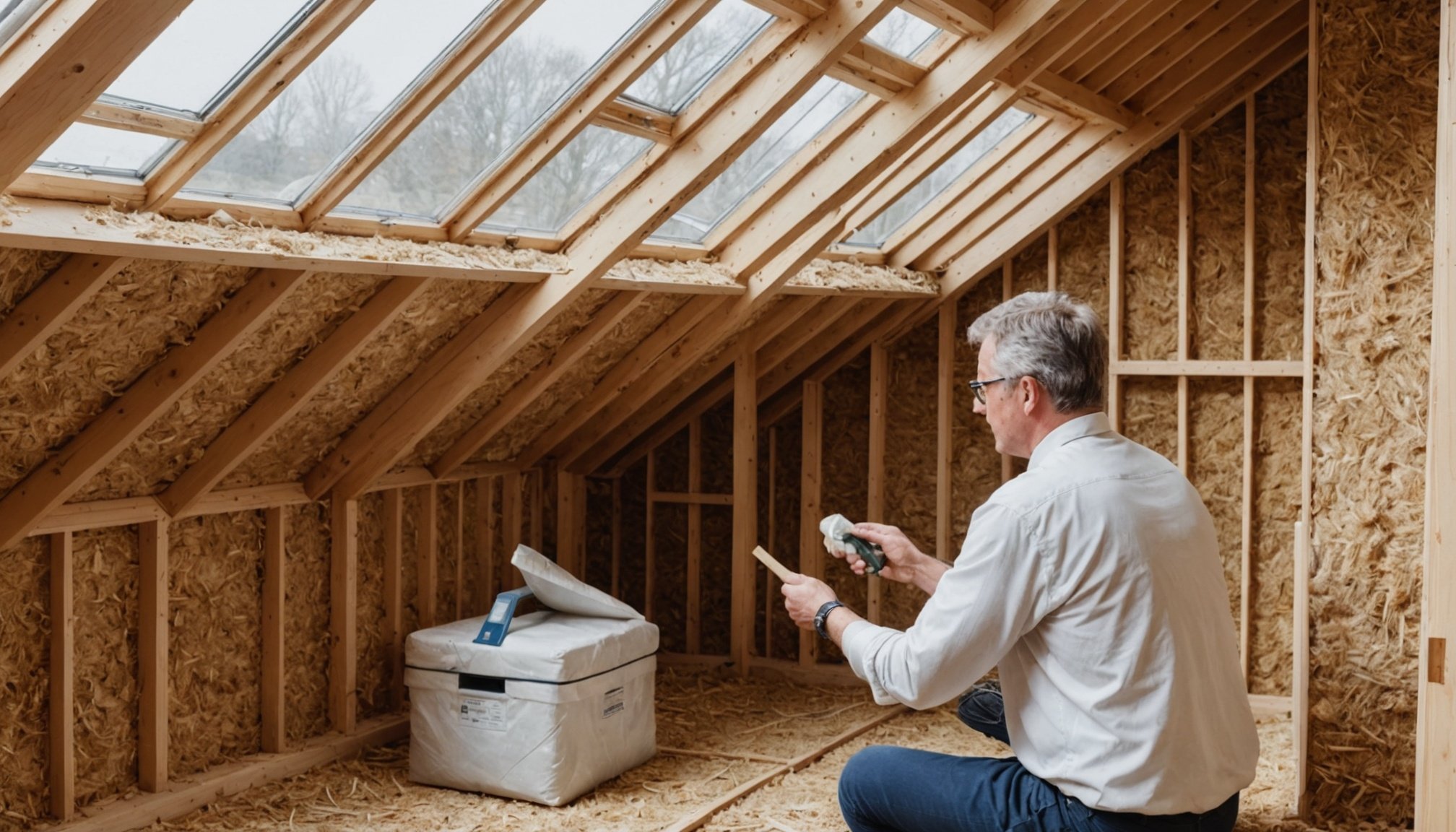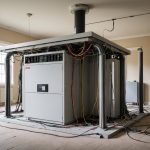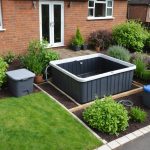Overview of Eco-Friendly Insulation Options
In the UK, choosing eco-friendly insulation materials is becoming increasingly important for homeowners aiming to reduce their carbon footprint. Several sustainable insulation options are available, each offering unique benefits for residential homes. Sheep’s wool, for instance, is a natural and renewable resource known for its excellent thermal regulation and moisture control properties. Similarly, hemp insulation is praised for its durability and ability to resist pests and mould.
The benefits of selecting sustainable insulation extend beyond environmental impact. Homeowners can also enjoy improved indoor air quality and potential energy savings as these materials often provide superior thermal performance compared to traditional options.
A lire en complément : Enchant your bookshelf with stunning book nook creations
When comparing traditional versus eco-friendly insulation options, consider not only cost-effectiveness but also the materials’ environmental impact. Conventional insulation, like fibreglass, often involves high energy consumption during production and may release harmful particles. In contrast, eco-friendly options like cellulose, made from recycled paper, offer a more sustainable choice with minimal environmental damage.
Choosing the right insulation requires careful consideration of both sustainability and performance to make an informed decision that benefits both the environment and your home.
Sujet a lire : Essential Components for Crafting a Genuine Coastal Bathroom Inspired by the UK
Benefits of Sustainable Insulation
Incorporating eco-friendly insulation into your home offers multiple advantages. Notably, it can lead to significant energy savings by minimizing heat loss in the winter and heat gain in the summer. This results in lower utility bills, offering a practical financial incentive to adopt sustainable solutions.
A key sustainability advantage is the reduction of your home’s carbon footprint. By using materials that require less energy to produce and that enhance energy efficiency, you’re contributing to a healthier planet. The reduced reliance on non-renewable resources and decreased greenhouse gas emissions make this a compelling choice for environmentally-conscious homeowners.
Moreover, the benefits of eco-friendly insulation extend to indoor environments. Improved indoor air quality is often a result of using non-toxic, natural fibers that do not emit harmful substances. This enhances overall comfort, providing a cleaner and healthier living or working space. Sustainable insulation not only creates an ideal temperature balance but also fortifies the integrity of your environment by utilizing natural, breathable materials.
Installation Tips for Eco-Friendly Insulation
Selecting the right insulation installation guidelines is key to creating an eco-friendly space. Knowing when to opt for DIY vs professional methods can significantly impact efficiency and effectiveness.
DIY Installation Recommendations
Installing your own insulation can be cost-effective if you’re comfortable with eco-friendly installation practices. Start with materials like cellulose or sheep’s wool, noted for their ease of use. Ensure you follow manufacturer instructions closely to avoid gaps, which reduce insulation efficiency. Equip yourself with the necessary safety gear to protect against dust and debris. Adequate ventilation is also critical to maintain air quality during installation.
When to Hire Professionals
If you’re dealing with complex structures or feel unsure about completing the project safely, consider hiring professionals. Certified contractors are experienced in sustainable practices and can ensure proper installation that maximizes energy efficiency. They have access to specialised tools and can navigate challenging building structures more easily than untrained individuals.
Safety Precautions during Installation
Regardless of the method, safety should never be compromised. Wear protective gear such as masks, gloves, and goggles. Make sure to work in a well-ventilated area to protect yourself from inhaling harmful particles. Awareness and adherence to these safety precautions are crucial for a successful eco-friendly insulation project.
Comparison of Eco-Friendly Insulation Materials
When evaluating eco-friendly options for insulation, it’s crucial to consider the performance metrics of each material. Popular materials such as cellulose, sheep’s wool, and hemp provide a variety of insulation material comparisons to suit different needs and environments.
Cellulose, often made from recycled paper, is renowned for its high R-value—indicating efficient thermal performance. Moisture resistance is moderate, necessitating proper sealing to maximize its lifespan. It’s most suitable for loose-fill applications in attics and wall cavities.
Sheep’s wool offers natural moisture management, absorbing and releasing water without losing insulation properties. Its R-value is comparable to traditional options, with added benefits of air purification through the adsorption of toxic chemicals. This makes it ideal for use in areas with fluctuating humidity levels.
Hemp insulation, derived from the hemp plant, scores high on durability and thermal resistance, offering a robust barrier against the elements. Its environmental impact is low, thanks to sustainable cultivation practices. Typically, hemp is applied in walls and floors where durability and moisture resistance are top priorities.
Understanding which eco-friendly insulation materials suit specific use cases can optimise overall building performance, leading to more sustainable and efficient structures.
Cost Implications of Eco-Friendly Insulation
When considering insulation costs, financial considerations play a significant role, especially when implementing eco-friendly insulation. Initial costs can be higher than traditional materials; however, solutions like wool or cellulose may offer substantial long-term savings. For instance, these savings manifest in reduced energy bills over time as the insulation reduces heat loss.
Government Incentives
In the UK, potential government grants and incentives can aid in offsetting insulation costs. Schemes like the Green Homes Grant have offered homeowners financial support, making eco-friendly options more accessible. These programs can considerably lower the initial financial burden through rebates or subsidies.
Material and Installation Cost Comparisons
Eco-friendly insulation materials vary in costs and efficiency. Natural materials such as wool may cost more upfront compared to synthetic alternatives. However, they often deliver superior performance and longevity. Installation methods also impact financial considerations. Professional installation might be pricier but ensures optimal effectiveness and can avert future inefficiencies.
Thus, while eco-friendly insulation may demand a higher initial investment, it often leads to significant long-term savings and is bolstered by governmental supports in the UK, encouraging environmentally and economically sound decision-making.
Relevant Regulations and Standards in the UK
Understanding UK insulation regulations is crucial for ensuring compliance and promoting sustainability in building practices. The building codes in the UK outline specific requirements for thermal insulation to enhance energy efficiency. These regulations aim to reduce the carbon footprint of buildings by improving thermal performance and ensuring better insulation.
Adhering to eco-friendly standards is not only a legal requirement but also a significant step toward sustainable development. These standards dictate the usage of environmentally friendly materials and techniques in construction, aligning with national goals for emissions reduction. Implementing eco-friendly standards can lead to considerable energy savings, benefiting both the environment and the occupant’s energy bills.
For those seeking compliance guidance, several resources are available. Organizations like the Building Regulations Advisory Committee (BRAC) provide insights on legal obligations and eco-friendly materials. They offer comprehensive guidelines and practical advice to ensure adherence to building codes. By familiarizing with these resources, builders and homeowners can effectively navigate the legal landscape, contributing to the reduction of environmental impact through informed decisions.
Local Suppliers and Resources
Searching for eco-friendly insulation suppliers? The UK is home to numerous companies dedicated to sustainability. These suppliers offer eco-friendly insulation materials that contribute to a greener environment. They prioritise low environmental impact while maintaining effectiveness.
Finding the right contractor familiar with such materials is equally significant. Seek out UK contractors recommended for their focus on sustainable practices. They not only ensure proper installation but also align with environmental objectives. It’s wise to research past projects and client reviews to assess their commitment to sustainable construction.
For those interested in diving deeper, a wealth of local resources is available. Community organisations and online platforms can provide hefty support. These venues often supply directories of suppliers and contractors and serve as hubs for exchanging ideas and advice on eco-friendly building strategies.
Utilising these resources helps achieve eco-conscious building goals, ensuring the use of insulation that benefits both your project and the planet. Sustainable living starts with informed choices; leveraging local expertise makes this journey smoother and more impactful.
Potential Energy Savings from Eco-Friendly Insulation
Eco-friendly insulation provides considerable energy savings and contributes to overall cost reduction in households. Case studies exemplify this, demonstrating significant energy efficiency improvements. A notable example is a residential study where the installation of eco-friendly insulation cut electricity bills by 30% in the first year. This demonstrates insulation efficiency and its direct impact on reducing energy consumption.
Several factors influence how sustainable insulation achieves such energy savings. The type of insulation material, installation technique, and the climate zone play pivotal roles. Materials like cellulose and recycled cotton offer high thermal resistance, enhancing insulation efficiency. Correct installation ensures minimal air leakage, which is crucial for maximizing potential savings.
A statistical analysis of cost reductions reveals that initial investments in sustainable insulation choices are offset by energy savings within five years, leading to long-term financial benefits. Homes with such insulation often experience increased resale value, making it a wise investment.
Thus, choosing eco-friendly options not only contributes to environmental conservation but also fosters significant financial savings over time.











